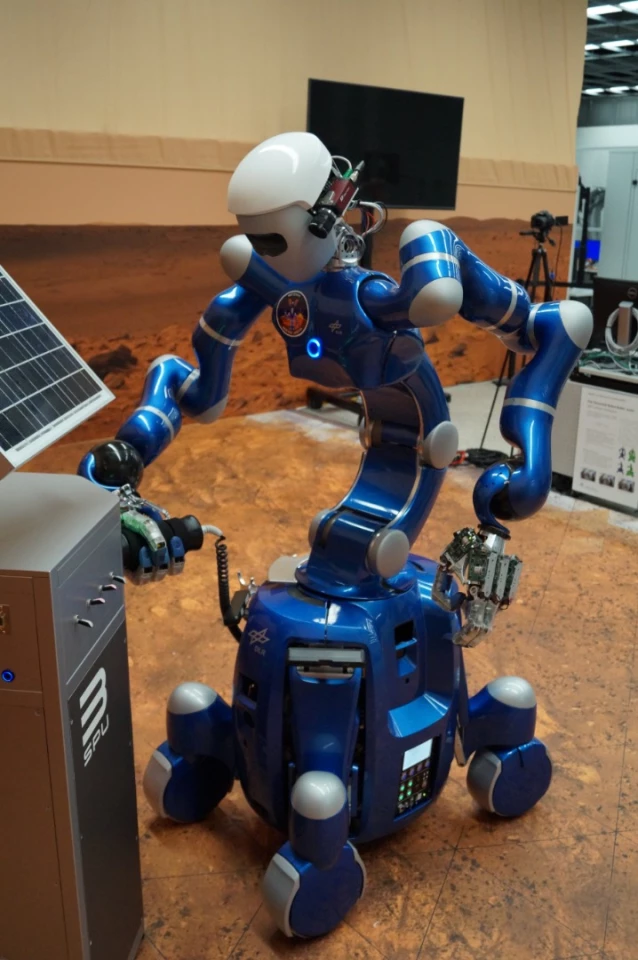An astronaut aboard the International Space Station (ISS) took a stroll around the Earth by proxy today, thanks to a new robotics system. A little after 11:30 am CEST (09:30 GMT), ESA astronaut Alexander Gerst took remote command of the humanoid robot Rollin' Justin at the DLR German Aerospace Center establishment in Oberpfaffenhofen, Germany. It was a two-hour test of the latest technology that will allow future expedition crews to explore other planets while remaining in orbit about them.
According to ESA (the European Space Agency), Friday's test is the latest in the multi-space-agency Multi-Purpose End-to-End Robotic Operations Network (METERON) project aimed at having the best of both manned and robotic missions. Robots are far cheaper to send on planetary missions, with the costs of landing and operating them on the surface of planets and moons being several orders of magnitudes cheaper than sending down astronauts.
The problem is that even the most advanced robots are limited in what they can do, and planetary missions are so far away that radio signals can take minutes or hours to reach the robot, so remote control from Earth isn't practical. For this reason, METERON and similar projects aim at splitting the difference by creating a system where the astronauts remain in orbit, but they can remotely control the robots on the surface.

For Friday's test, Rollin' Justin was controlled by Gerst from the ISS using a tablet that allowed the astronaut to see from the robot's point of view as it worked on a set of solar panels in a simulated Martian landscape. However, this wasn't a simple master/slave setup, but one where Rollin' Justin had a surprising degree of autonomy to make up for the fact that communications with the ISS are not the most reliable for such a task – which is a plus, because it's the sort of problem a real mission would face.
"Rather than commanding every joint and every movement of the robot, which demands a high mental workload from the human, we rely on the robot's intelligence to carry out small task packages as commanded by the ISS crew," says principal investigator Neal Lii of DLR. "What we're looking for with these SUPVIS Justin experiments is demonstrate robots as genuine coworkers, where astronauts give abstract commands that the robots can compute locally then carry out. Our model is supervised autonomy, with astronauts able to manage a team of robots to achieve a given goal.
"We want to see how we can make the interaction as easy and intuitive as possible, while building up the complexity of the tasks with each successive ISS-ground experiment. Starting with simpler switching on/off tasks, we have advanced to asset retrieval, installation, and dexterous repairs for this session. These represent some of the most dexterous telerobotic tasks to be commanded from space to date."
Rollin' Justin is a humanoid robot developed as a research platform by DLR. Introduced in 2008, it stands 75.2 in (1.91 m) tall and weighs around 440 lb (200 kg). The arms, torso, and mobile platform have 51 degrees of freedom, and it can operate for over an hour on its internal battery as it travels at speed of up to 4.4 mph (7.2 km/h). In addition, it has torque sensors in all joints, two balance sensors, a pair of stereo cameras, four color cameras, and is designed to work with humans in cooperative tasks.












